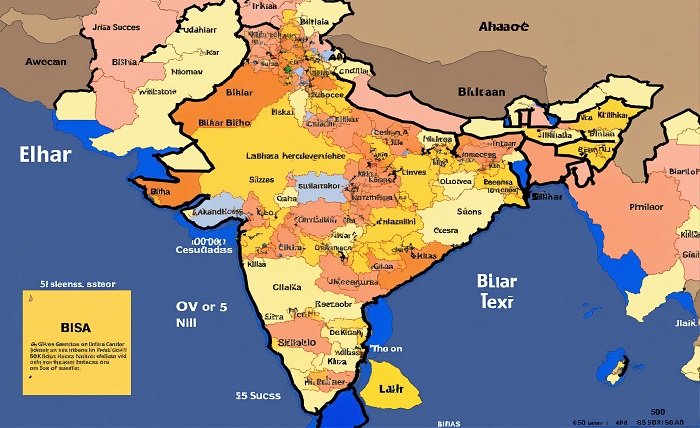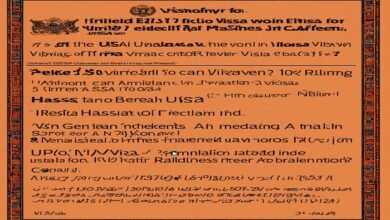Bihar Map: Exploring the Geography, Districts, and Cultural Significance

The Bihar map is not just a geographical representation of the state but also a reflection of its history, culture, and heritage. By studying the Bihar map, one can see how the state’s boundaries, rivers, districts, and regions have shaped its socio-economic and cultural landscape. The Bihar map serves as a powerful tool for students, researchers, and travelers who want to explore the richness of this eastern Indian state. From the fertile Gangetic plains to the historical sites marked on the Bihar map, every element tells a story of tradition and progress.
Bihar Map: Geographic Location and Boundaries
The Bihar map highlights the state’s location in eastern India, bordered by Nepal in the north, West Bengal in the east, Uttar Pradesh in the west, and Jharkhand in the south. The Bihar map shows that the River Ganga flows right through the middle of the state, dividing it into north and south Bihar. This division is crucial as the Bihar map indicates differences in climate, soil, and agricultural patterns between the two regions. Looking closely at the Bihar map, one can understand why the state has historically been called the “land of rivers and fertile plains.”
Bihar Map: Districts and Administrative Divisions
The Bihar map clearly displays its 38 districts, grouped into several administrative divisions. Each district on the Bihar map plays an important role in governance, culture, and economy. For example, Patna, located in central Bihar on the Bihar map, is the capital city and a hub for education and politics. Other key districts like Gaya, Bhagalpur, and Muzaffarpur are also marked on the Bihar map, showing their importance in tourism, agriculture, and industry. A close look at the Bihar map helps people understand how administrative boundaries contribute to Bihar’s development.
Bihar Map: Rivers, Mountains, and Natural Features
The Bihar map is dominated by rivers like the Ganga, Kosi, Gandak, and Son, which have nourished the land for centuries. The Bihar map also highlights the Kaimur Hills and Rajgir Hills, which add to the natural diversity of the state. Flood-prone areas, especially in north Bihar, are visible on the Bihar map, showing how rivers shape the lives of millions. The presence of fertile plains on the Bihar map explains why agriculture thrives in the state. Natural resources and landscapes marked on the Bihar map contribute to Bihar’s economic and cultural identity.
Bihar Map: Historical and Cultural Landmarks
The Bihar map is dotted with historical and cultural sites that define India’s heritage. Bodh Gaya, marked on the Bihar map, is a UNESCO World Heritage site where Lord Buddha attained enlightenment. Nalanda and Rajgir, also visible on the Bihar map, are significant for their ancient universities and spiritual traditions. The Bihar map shows Vaishali, an important site in both Jainism and Buddhism. These landmarks make the Bihar map not just a tool of geography but also a guide to understanding the cultural depth of the region.
Bihar Map: Transportation and Connectivity
The Bihar map highlights a well-developed transportation network that connects districts, towns, and villages. National highways and railways are clearly outlined on the Bihar map, showing how people and goods move across the state. The Bihar map also identifies airports like those in Patna and Gaya, which connect Bihar to the rest of India. Rivers shown on the Bihar map have historically been used for trade and transport. Today, the Bihar map is used by planners to improve infrastructure and boost connectivity across the state.
Bihar Map: Economic and Agricultural Importance
The Bihar map reflects the state’s economy, which is largely driven by agriculture. Rice, wheat, maize, and sugarcane cultivation is visible in different regions of the Bihar map, highlighting the fertile Gangetic plains. Industrial centers like Barauni and Bhagalpur are also marked on the Bihar map, showing the balance between traditional farming and modern industries. The Bihar map helps investors, farmers, and policymakers identify areas for development and resource management. As such, the Bihar map is not just a geographical chart but also a roadmap for economic growth.
Bihar Map: Role in Education and Research
The Bihar map is an essential tool for education, helping students learn about geography, history, and socio-economic conditions. Universities and colleges in Patna, Gaya, and Bhagalpur are often highlighted on the Bihar map for academic purposes. Researchers use the Bihar map to study river systems, population distribution, and agricultural patterns. For schoolchildren, the Bihar map makes learning more interactive and visual. In higher education, the Bihar map is part of research on urbanization, migration, and cultural heritage. Thus, the Bihar map is a bridge between knowledge and practical understanding.
Conclusion
The Bihar map is much more than a representation of land and boundaries; it is a living document that reflects the state’s geography, history, economy, and culture. Every feature of the Bihar map—from rivers and hills to districts and cities—tells a unique story about Bihar’s past and present. Whether used by students, travelers, policymakers, or historians, the Bihar map remains an indispensable tool. By studying the Bihar map, one can truly appreciate the richness and diversity of this vibrant state.
FAQs
1. How many districts are shown on the Bihar map?
The Bihar map shows 38 districts that are part of the state’s administrative divisions.
2. Which river is most prominent on the Bihar map?
The Bihar map highlights the River Ganga as the most prominent and central river.
3. What historical sites can be found on the Bihar map?
The Bihar map shows Bodh Gaya, Nalanda, Rajgir, and Vaishali as key historical sites.
4. How does the Bihar map help in agriculture?
The Bihar map identifies fertile plains and river basins, guiding farmers in agricultural planning.
5. Can the Bihar map be used for tourism purposes?
Yes, the Bihar map is often used to explore tourist destinations, cultural sites, and travel routes.




